You don’t need to be an astute observer to notice that hangars—those utilitarian metal boxes that house planes but often lack personality or purpose beyond storage—haven’t really evolved very much since, well…the very dawn of aviation.
And that’s a problem. You see, most hangars at US airports were built decades ago, back when the “big” jets of the day looked positively petite compared to a modern Gulfstream G700 or Global 8000. Those old hangars weren’t designed for today’s larger wingspans, taller tails, and beefier fuselages. Trying to fit an Ultra Long-Range jet in some of them is like squeezing a yacht into a rowboat’s dock.
So when I heard about BLACKBIRD PARTNERS, a Greenville, SC-based real estate developer shaking up the aviation world with their innovative hangar concept, called The Nest, I was intrigued.
Imagine hangars with 140-foot clear spans, 28-foot-tall doors, and the flexibility to house anything from a Vision Jet to the biggest long-range aircraft you can buy (short of a BBJ or ACJ). No squeezing. No crossing your fingers every time you tow in. And no renting space in a shared metal box alongside five other airplanes.
But The Nest is more than just spacious. BLACKBIRD PARTNERS, the team behind this concept, has combined their backgrounds in jet sales, high-end real estate development, and concrete construction to create hangars that match the way jet owners actually live. We’re talking semi-custom interiors from 3,500–4,000 square feet that can be personalized to your taste, whether that’s a sleek boardroom, a golf simulator lounge, a full bar and kitchen, or even a private lobby.
As BLACKBIRD co-founder Carson Fox told me, “If you’ve got one of the nicest jets in the world, why on earth would you park it in a glorified metal shed?”
“If you’ve got one of the nicest jets in the world, why on earth would you park it in a glorified metal shed?”
BLACKBIRD co-founder Carson Fox
That was all the invitation I needed to sit down with Carson and his business partner, Ryan Bedford, to discuss how they’re shaking up the hangar game and why they think The Nest is the future for jet owners who want control, comfort, and a place they’re proud to call home base.
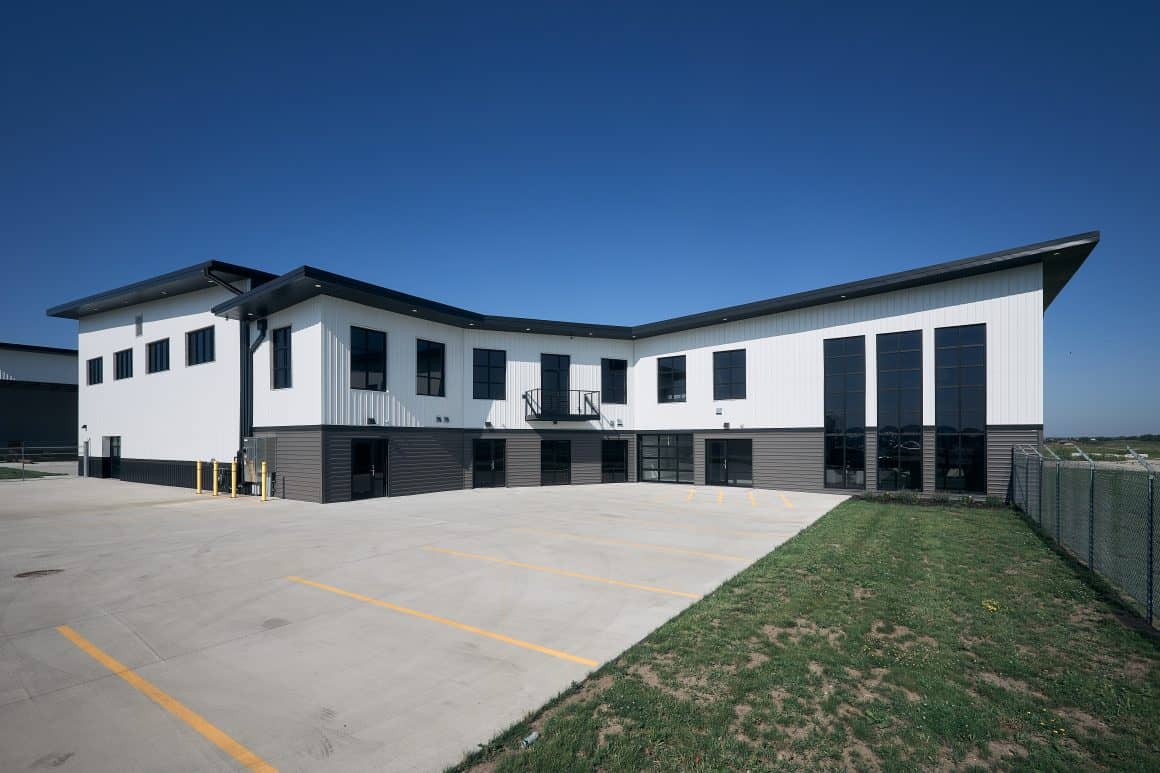
AvGeekery: Let’s start from the beginning. Tell us the story behind BLACKBIRD PARTNERS.

RB: We’re primarily a multifamily real estate developer based in Wisconsin. Apartments are our bread and butter—we build, develop, and manage our own units. But we’ve also got this offshoot business: a concrete company that’s now the nation’s largest insulated concrete form contractor. It’s a specialized form of concrete we use to build our apartments, and it’s incredibly durable.
As that side of the business grew, we found ourselves moving teams all over the country—South Carolina, Florida, Georgia, Utah, you name it. That’s when aviation went from being a convenience to being a necessity for us.
So, we decided to build our own hangar development at our local airport. And, being real estate developers, we weren’t about to settle for a standard, tin can, crappy-looking hangar.
Everything we build goes through architectural review boards. Aesthetics matter to us. So we came up with a design that’s a cut above—two models, same look, that make people stop and say, “Now that’s what a hangar should look like.” That concept caught people’s attention, and that’s how I got connected with Carson through mutual acquaintances. He loved the product, loved the idea, and jumped on board right away.
It’s not just a hangar. First, it’s built like a fortress—all concrete, rock-solid. Second, it’s a lifestyle shift. It’s not just a spot to park your plane. In a few weeks, I’m hosting a friend’s wedding in my hangar for 400 people. We’ve had pickleball tournaments, birthday parties—I’ve even got a bounce house in there right now for my kids. It’s an extension of your life, not just a storage unit. We think it can get more people excited about aviation as a lifestyle, instead of settling for the same old rickety, rusty tin can most planes get shoved into.

AvGeekery: So it almost becomes a community center in a way?
RB: Yeah–it can be. It’s really just an extension of your house, right? Some people have a vacation house or a lake house—this becomes your hangar, with a dual purpose.
For instance, our building has three hangars, and each owner uses the space differently. Mine’s all about family—we’ve got a family room where we hang out, host parties, and play pickleball, volleyball, even basketball inside. It’s fun for us.

Another guy in the building has older kids, so his is more business-oriented. He’s got a boardroom for meeting executives and even a golf simulator to break the ice with clients. It depends on the person, but you can truly make the space your own. That’s what’s unique—it’s not just a hangar.
CF: My background’s a bit different. I came from real estate, then jet brokerage, before joining Ryan on the development side. Ryan touched on it earlier, but I saw the same disconnect over and over working with high-net-worth clients: these people have incredible homes, cars, and offices, but their hangars? Usually just plain metal boxes. It doesn’t match the rest of their lifestyle.
And you mentioned innovation—that’s something Ryan really brought to The Nest at UES (Waukesha County Airport in Waukesha, WI). A couple of things stand out to me: First, hangars are needed all across the U.S., especially in the ultra-long-range jet sector, because so much of the existing infrastructure simply can’t handle these aircraft. Second, owners have rarely had the ability to truly control their own hangar space.
We’re changing that. With us, you own the space on a long-term ground lease, which gives you the control and security you want. And our sole focus is hangars—we’re not moving planes, servicing them, or fueling them. We just want to build the best hangars possible and make BLACKBIRD synonymous with quality.
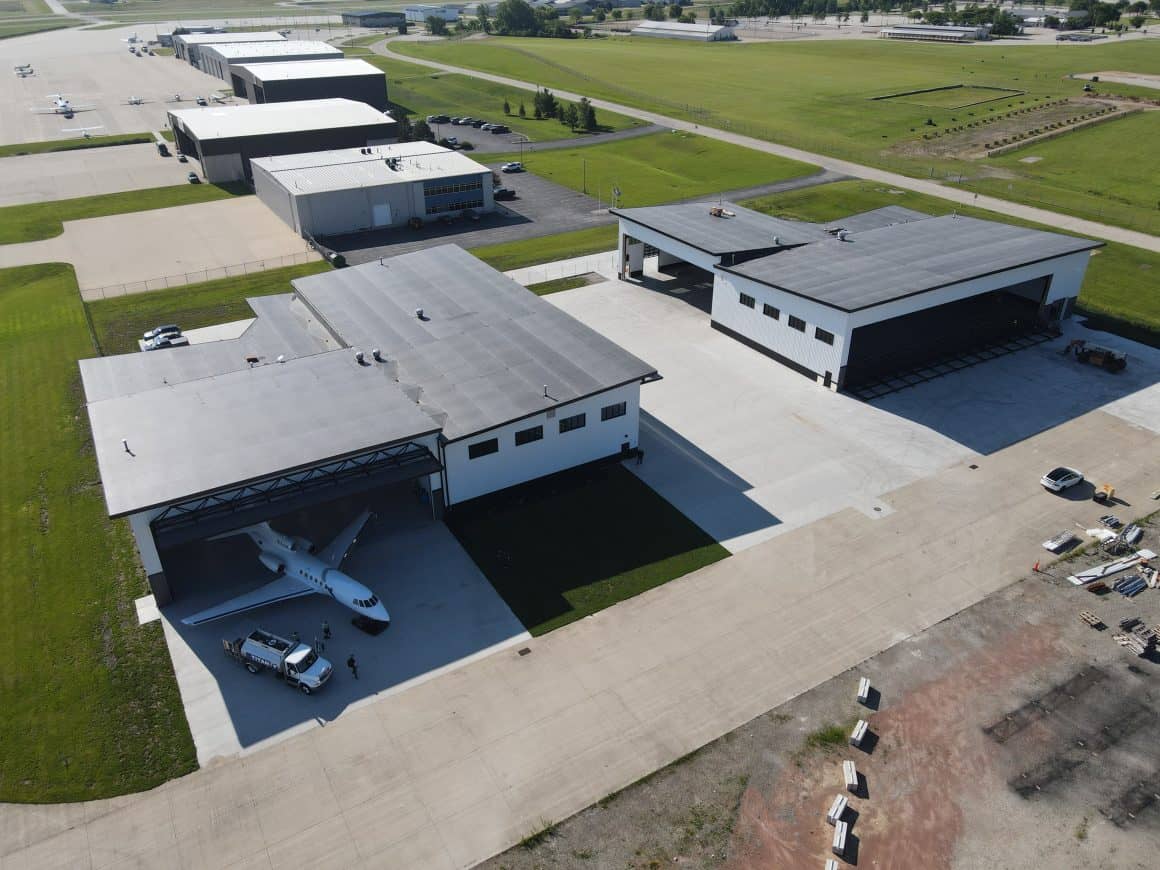
AvGeekery: Is The Nest your only product at the moment?
CF: Yeah, it’s our only product, but we will have multiple locations–two in the next 2.5 years and at least ten by 2030. Down the road, we might launch other products, but for now, The Nest is our focus. It’s the type of hangar space we develop—and will continue developing—in the future.
AvGeekery: Why ‘The Nest?’ Tell us the story behind that.
RB: We moved away from the word “hangar” because it carries a negative connotation. When you hear “hangar,” you picture those ugly tin-can buildings. We wanted something that speaks to lifestyle, not just storage.
Blackbird was already our company name, and Carson came up with The Nest. I thought it was genius—because that’s where birds live. It’s their home base, not just the place they take flight. Birds could launch from any branch, but the nest is where they return. It fits perfectly with our marketing and the culture we’re building.
CF: It’s a very personal, intimate space—just like a bird’s nest or your own house. Ryan’s hangar is designed for his family, with their needs in mind. Another hangar on the same airfield is for a corporation, completely customized to their operations. Each one reflects the owner.
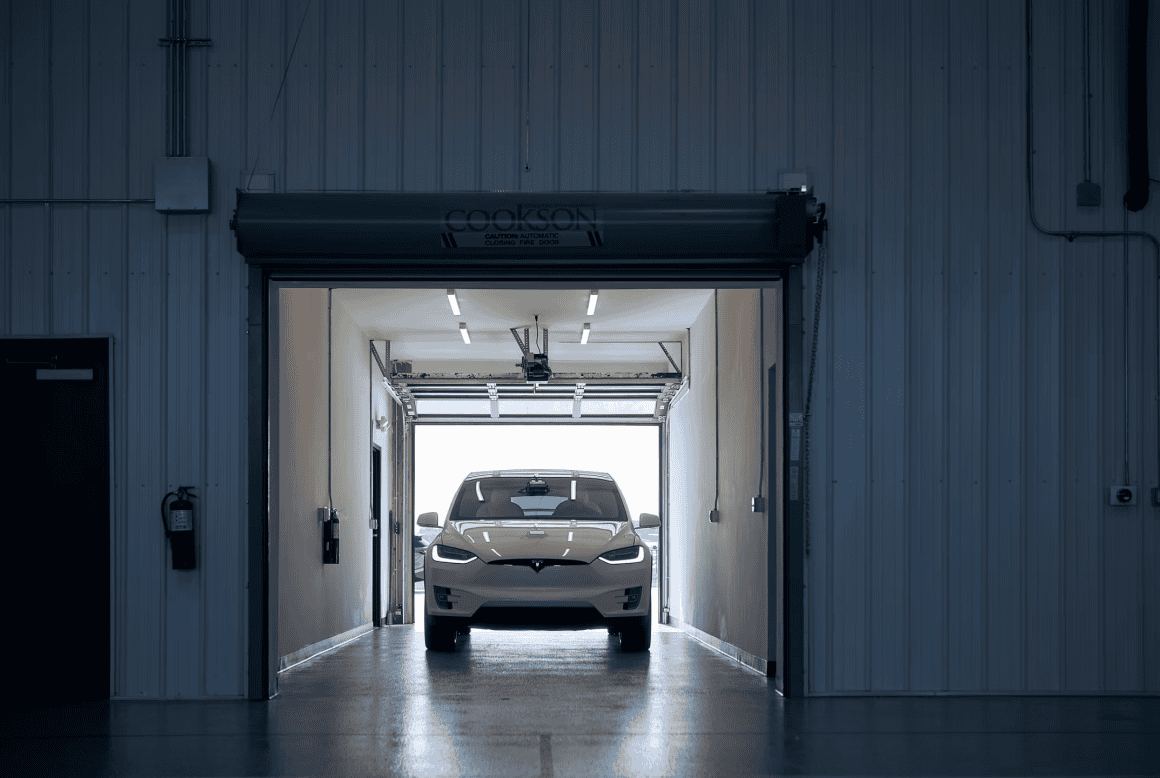
AvGeekery: You’re targeting private and business aviation, right?
CF: Yes. For now, we’re focusing on premium sites—major airports where demand already exists, not second- or third-tier locations. From an investment standpoint, we’re not here to speculate whether traffic will come to an airport or not. For the larger aircraft we’re targeting, we go where the demand is already proven.
Most of our locations will be at large international airports, but some will be at select local airports with more available land. Land is a big challenge—it’s one of the main constraints in this space.
We also prioritize airports that offer on-site US Customs facilities. If you’re flying internationally, you shouldn’t have to land somewhere else just to clear Customs and then reposition your aircraft. With our developments, you land, clear, and go home—all in one stop. No detours. No delays.
Our hangars can accommodate everything from a light jet, like a Vision Jet or TBM, all the way up to ultra-long-range aircraft. Each development includes hangars sized for different categories, and while I’m sure some piston aircraft owners will buy them, that’s not our primary market from a marketing perspective.
AvGeekery: How do you balance the lifestyle-driven appeal of The Nest with the practical needs of aircraft maintenance and ownership?
RB: People in aviation—whether they’re owner-pilots or just ride in the back—see it as a time machine. Time is their most valuable asset, and they want to enjoy it. It’s like someone who’s ultra-high-net-worth and loves boating—they don’t just own a boat they take out now and then; they also have a lake house. They want to be around it, even if they’re not on it. Aviation works the same way. If you have the space, the lifestyle and the aircraft side naturally mesh.
The problem is, until now, no one’s built a facility nice enough to support both. Our hangars have living spaces—golf simulators, pickleball courts, and even basketball courts for the kids in the winter or on rainy days. And right there in the same space? The plane. It’s multi-use by design.
We’ve also made sure the day-to-day experience matches the luxury of the aircraft itself. Every unit includes a fully equipped kitchen with top-tier Wolf appliances, plus spa-like bathrooms with full showers, so owners can freshen up after a flight in comfort that rivals home. The Nest gives owners flexibility, and there’s simply nothing else like it in the market.
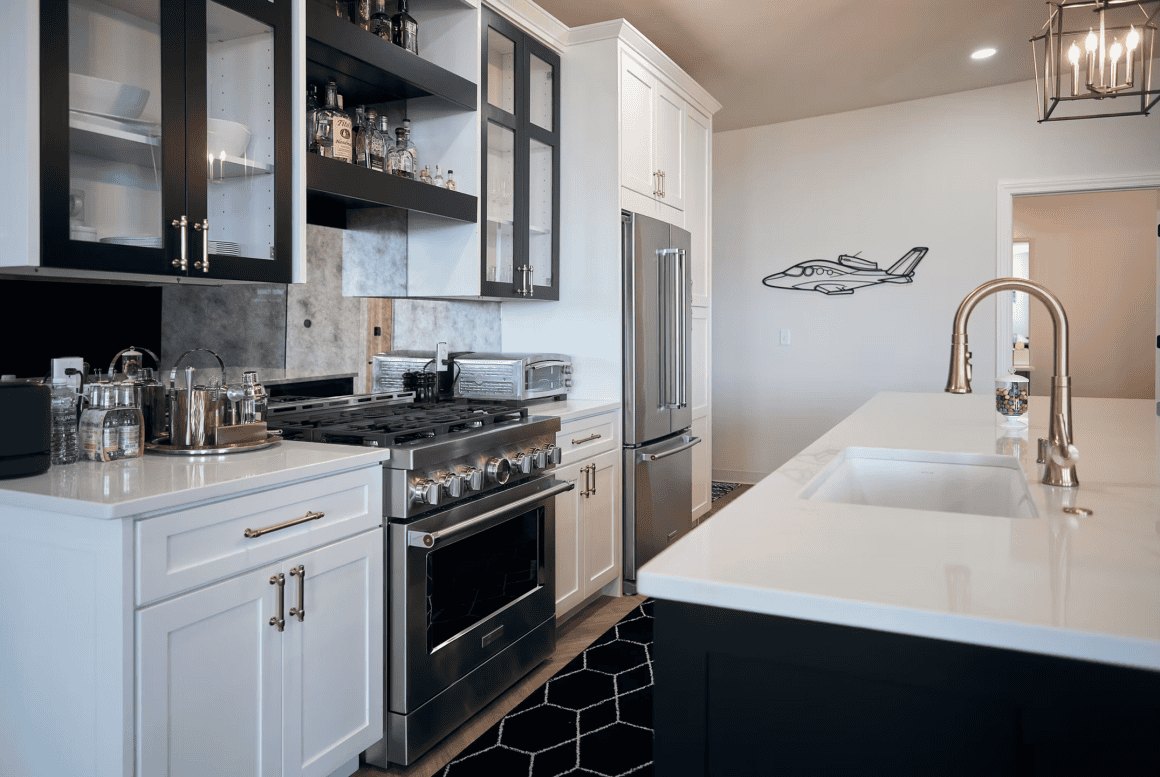
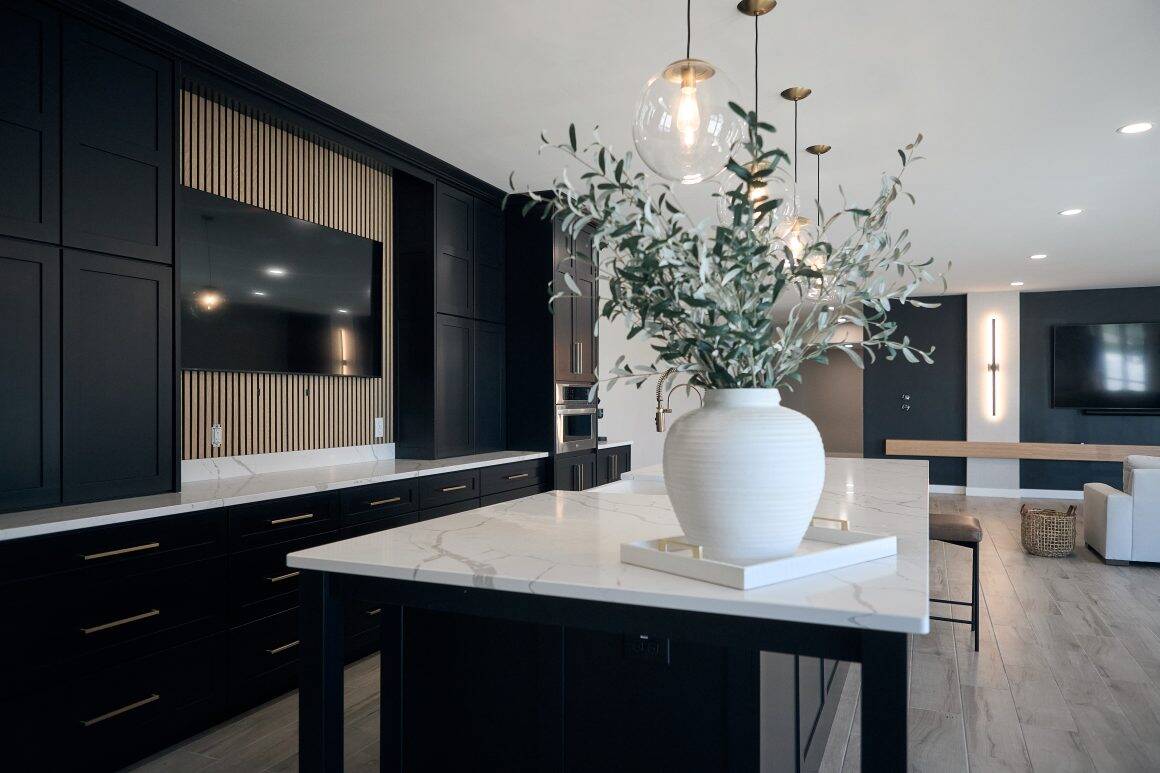
CF: Even with a lake house, some people are there every weekend, others just a couple of times a year—it’s the same with The Nest. Some owners will use the space constantly; others might only stop in to shower before or after a flight, or have a team member cook in the kitchen, which we outfit with premium appliances like Wolf.
It’s about flexibility and control. Owners decide how much or how little they want to use it. Either way, they’ve got a premium, private space for their aircraft—no sharing, no compromises.
Right now, shared hangars are a big issue. We see “hangar stuffing” all the time—packing 125 to 150 percent of capacity. That’s when you start seeing hangar rash from overcrowding. Having your own space significantly reduces that risk. It’s about control, and about protecting what’s often a multi-million-dollar asset from unnecessary damage.
RB: One of our current customers is a fractional charter company about to open two of our hangars. They’re using the exact same building design—but as a terminal for their clients. It has the same architectural appeal and structure, just customized with offices, a boardroom, and client amenities. It’s a completely different use, but that’s the point—The Nest adapts to what the owner needs.
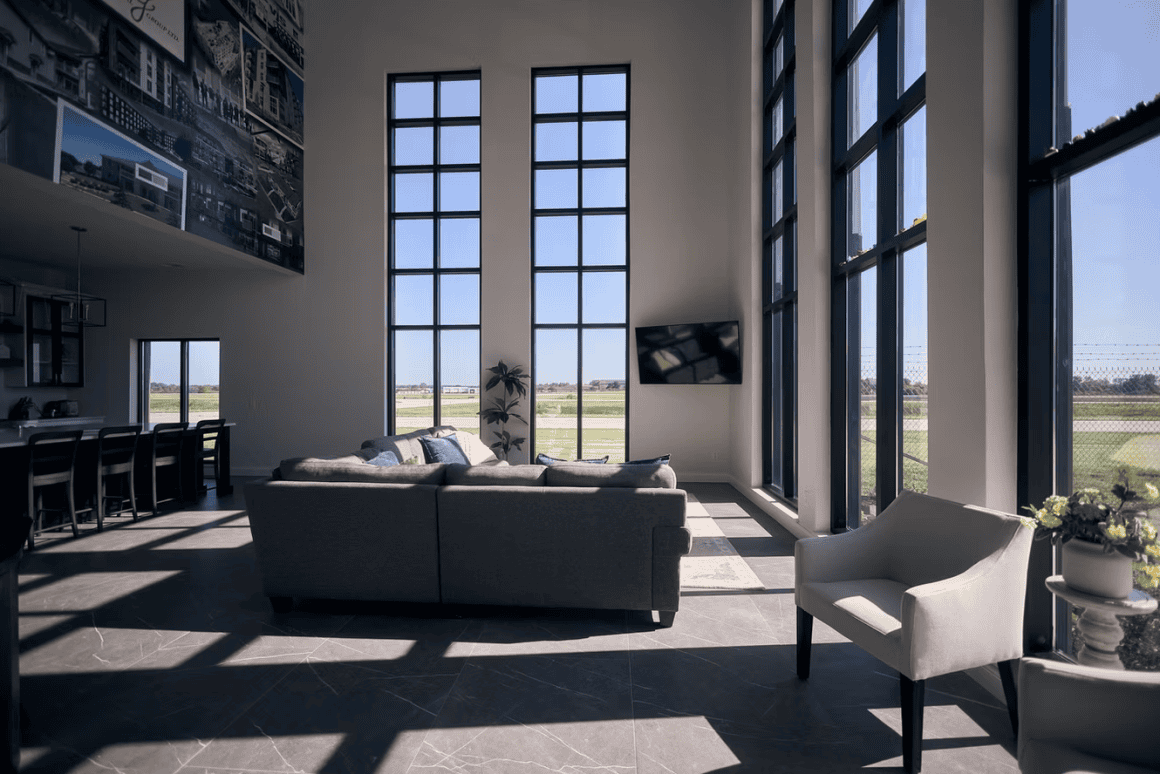
AvGeekery: How are you preparing for the rise of electric and hybrid aircraft into The Nest?
RB: As electric aircraft become more common—and I believe they’re coming, even if we’re not quite there yet—our hangars are already prepared. I was just talking to someone about an electric-powered glider, which is wild. It’s happening.
Right now, if you’re a piston or turboprop owner, you don’t need much power in your hangar. But as soon as you get into mid-size or super-mid jets, you need that extra power for ground starts. Since we’re designing The Nest to handle those larger jets, the infrastructure is already in place to support electric or hybrid aircraft.
You’ll be able to charge an electric aircraft using the same power systems we’re installing for starting jets. In other words, when that shift comes, we’re ready.
AvGeekery: What’s the most surprising or forward-thinking idea you’ve discussed for future developments?
CF: Honestly, when it comes to how we could make our product stand out, we’ve talked about just about everything. We’re serious about pushing boundaries. Sustainability is a big one—especially with SAF (sustainable aviation fuel), electric planes, and eVTOLs on the horizon.
One project we’re looking at is adding green roofs over the interior spaces. They’d look incredible from the air when you’re coming in to land, and they’d also be good for the environment. That’s a big one for us.
We’re also constantly refining the interiors. Ryan’s Waukesha site is already really impressive—it’s done incredibly well—but it’s still the first iteration. As with any product, there’s always room for improvement. Waukesha is our launch site, but every airport we develop after this will benefit from what we learn along the way.
RB: I’d add that our hangars, as designed and built, are LEED-ready. If a customer wants LEED certification, we can deliver because it’s already built into our system. You can’t do that with a tin-can hangar unless you wrap it in 12 inches of insulation and seal every inch—and even then, it’s not the same.
We’re also working on eliminating traditional sprinkler systems. Our roofs and walls are fire-rated, which reduces costs and avoids liabilities like water damage from sprinklers or foam systems—both of which have destroyed aircraft in the past.
AvGeekery: What’s the most compelling reason for private jet owners to invest in BLACKBIRD PARTNERS’ products?
CF: The product really sells itself because it’s so far ahead of anything else out there. First, it’s about control—aircraft owners want to own their space, and that’s exactly what our developments provide. Depending on the airport, we’ll typically build eight to twelve hangars, so owners can secure their space for the long term and use it however they want.
Second, it’s the lifestyle. Whether you own a Cessna 172 or a Global 8000, most owners are passionate about aviation. Yes, they use their aircraft as a timepiece, but they also genuinely enjoy being around it. The Nest lets them do more than just fly—it’s a space for events, charity functions, or simply preparing for a trip in a premium, upscale, and private environment. It’s a piece of home at the airport.
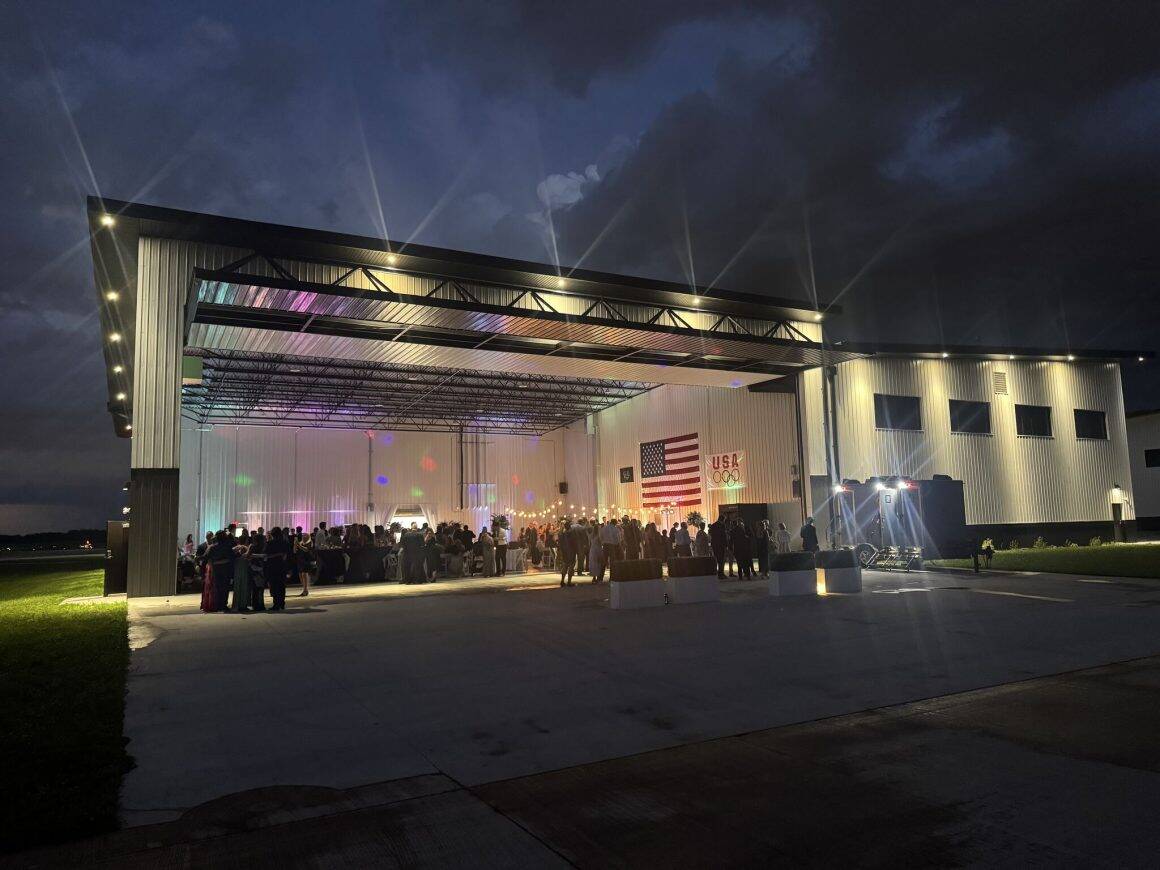
Third, it’s location, location, location—the golden rule of real estate. We’re developing at prime airports, so owners get a spot exactly where they’ve always wanted to be.
RB: And location isn’t just about the airport—it’s about where you are on that airport. We want to partner with top FBOs to service these aircraft.
Take two owners as an example: one might own a CJ4 and tug and fuel it themselves. Another might own a Falcon 7X. They’re going to want the FBO to handle all of that: towing, fueling, maintenance, everything an FBO normally does in a shared hangar. We want those services available in their personal hangar.
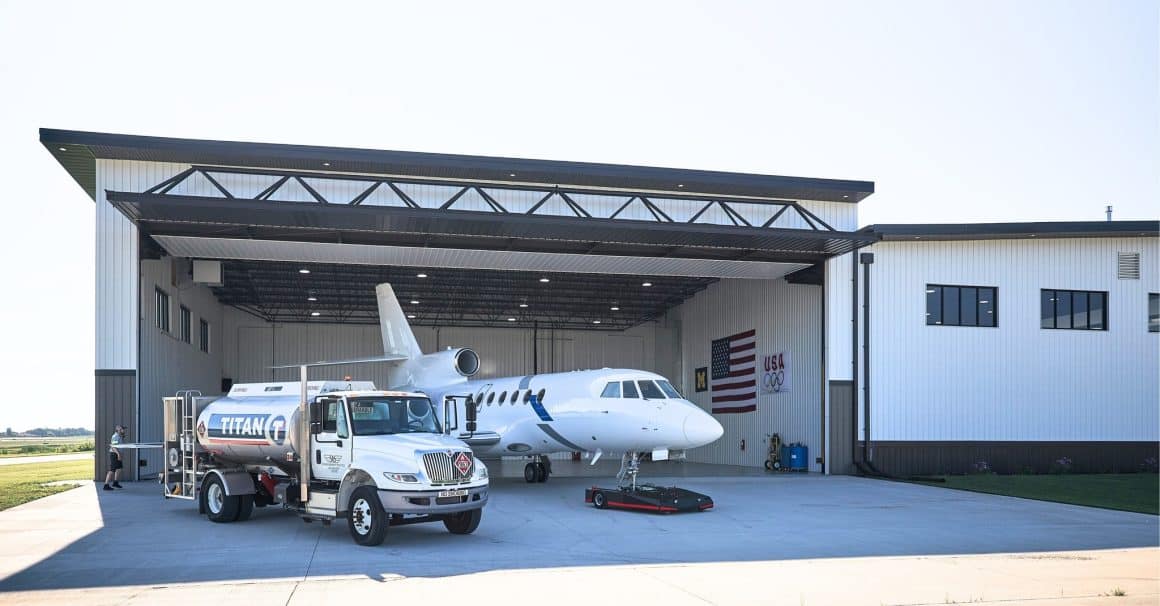
That’s why proximity to the right FBO matters, and why we’re looking at creating service agreements with them for handling, fueling, and more. It’s about building the best product, partnering with the best service providers, and creating a true aviation community.
We’ve already implemented this model at our Waukesha location and will continue to do so at all future sites. In cases where land is available but no existing FBO is adjacent to us, we plan to partner with an FBO operator and co-develop the facilities in tandem. It’s all about ensuring that aircraft owners not only have top-tier hangar space but also seamless access to elite FBO services right next door.
BLACKBIRD PARTNERS: Building Hangars Statements
Carson and Ryan aren’t in the business of building hangars. They’re in the business of building statements. The Nest isn’t just where a jet sleeps—it’s where ownership begins to feel like possession, and possession becomes experience.
And as Super Midsize and Ultra Long Range jets dominate the skies as the fastest-growing segments in private aviation, BLACKBIRD PARTNERS is designing specifically for them. Bigger bays, smarter layouts, and interiors that blur the line between flight prep and home life aren’t just luxuries—they’re necessities for aircraft that demand more from the ground up.
Boardroom or golf simulator. Pickleball court or private lounge. If you can dream it, they can house it…right alongside your jet.
For BLACKBIRD PARTNERS, square footage isn’t the most important aspect of a hangar. Rather, it’s about control, privacy, and a space that reflects the aircraft’s owner as much as the aircraft itself. As Carson told me, it’s “a piece of home at the airport.” A place where a trip to Tokyo starts in your own kitchen, and your hangar key unlocks more than a door—it unlocks a way of living.
In a business aviation world racing toward bigger, faster, more advanced aircraft, BLACKBIRD is ensuring the ground game keeps pace. The Wright Brothers may have invented flight, but The Nest is reinventing where it lands.
For more information on The Nest and BLACKBIRD PARTNERS, please visit blackbirdpartners.com.
AvGeekery extends sincere gratitude to Carson, Ryan, and the team at BLACKBIRD PARTNERS for their time and openness in sharing their vision with our readers today.
